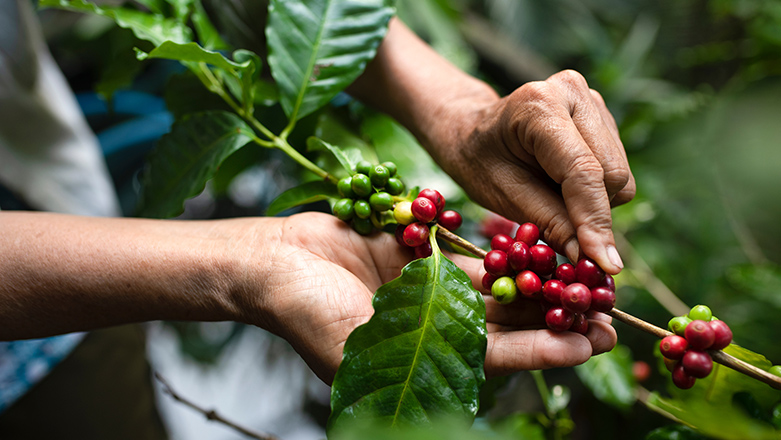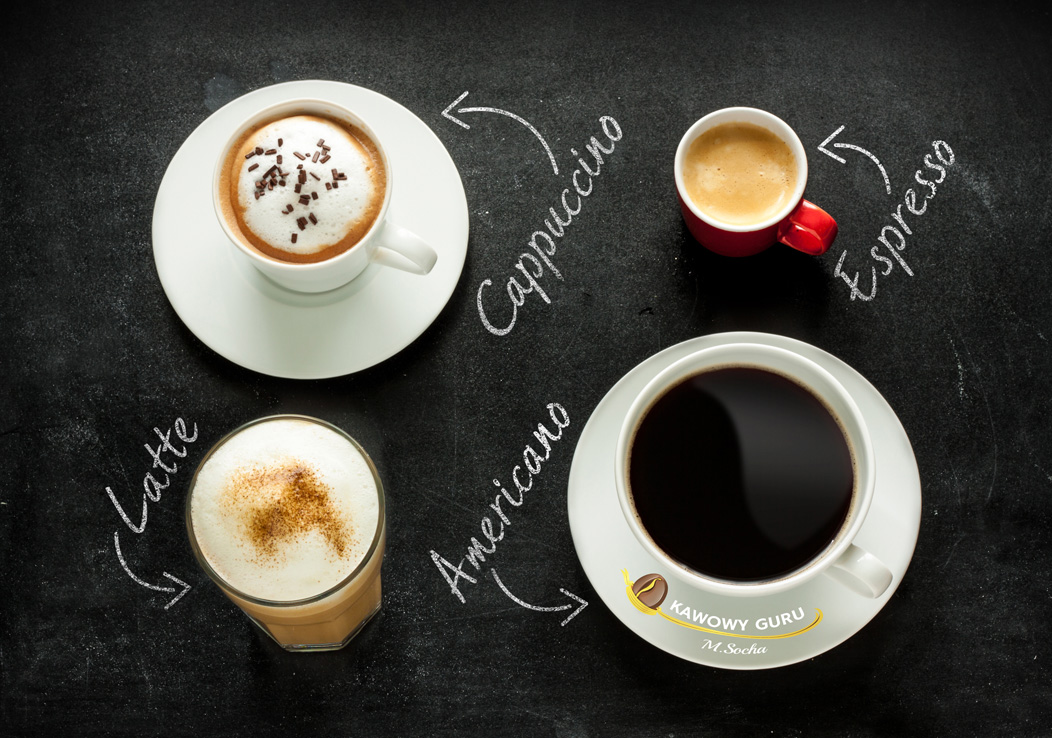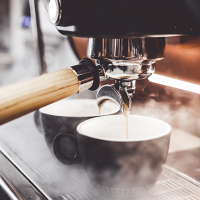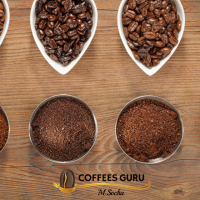Where does coffee come from? The answe for this question seems easy: from the shop, cafe, roastery… But have you ever wondered where is the beginning? How does coffee look in its natural development stage? If you ever wondered about these question while drinking your coffee, this article is for you.

Coffee is cultivated for over 1000 years. The homeland of coffee is Ethiopia. According to a legend, goatherd Kaldi discovered coffee trees. One day he noticed that his goats were exceptionally agitated. Driven by curiosity, he started carefully observing his goats and noticed that the more agitated ones eat small fruit from a nearby tree. He picked some of the fruit and went to a nearby monastery. There, a monk named Chadely crushed them, then put into the fire and after a short while they could smell a pleasant roasted coffee scent. That’s what the legend says.
Regardless of how real the legend is, it’s a fact that coffee trees originated from todays Ethiopia, where the trees can be still found in the wild. So – first thing: coffee grows on a tree. In the wild it looks like a cherry tree, but has bigger leaves and bears a lot of fruit. The fruit also look like a cherry, but they are a bit smaller. The coffee fruit pulp is sour and isn’t edible. The real treasure are their seeds – which means coffee beans. Coffee trees can be several meters tall, but on plantations, they are being chopped down to 1,5 – 2 meters, so it’s easier and faster to harvest their cherries.
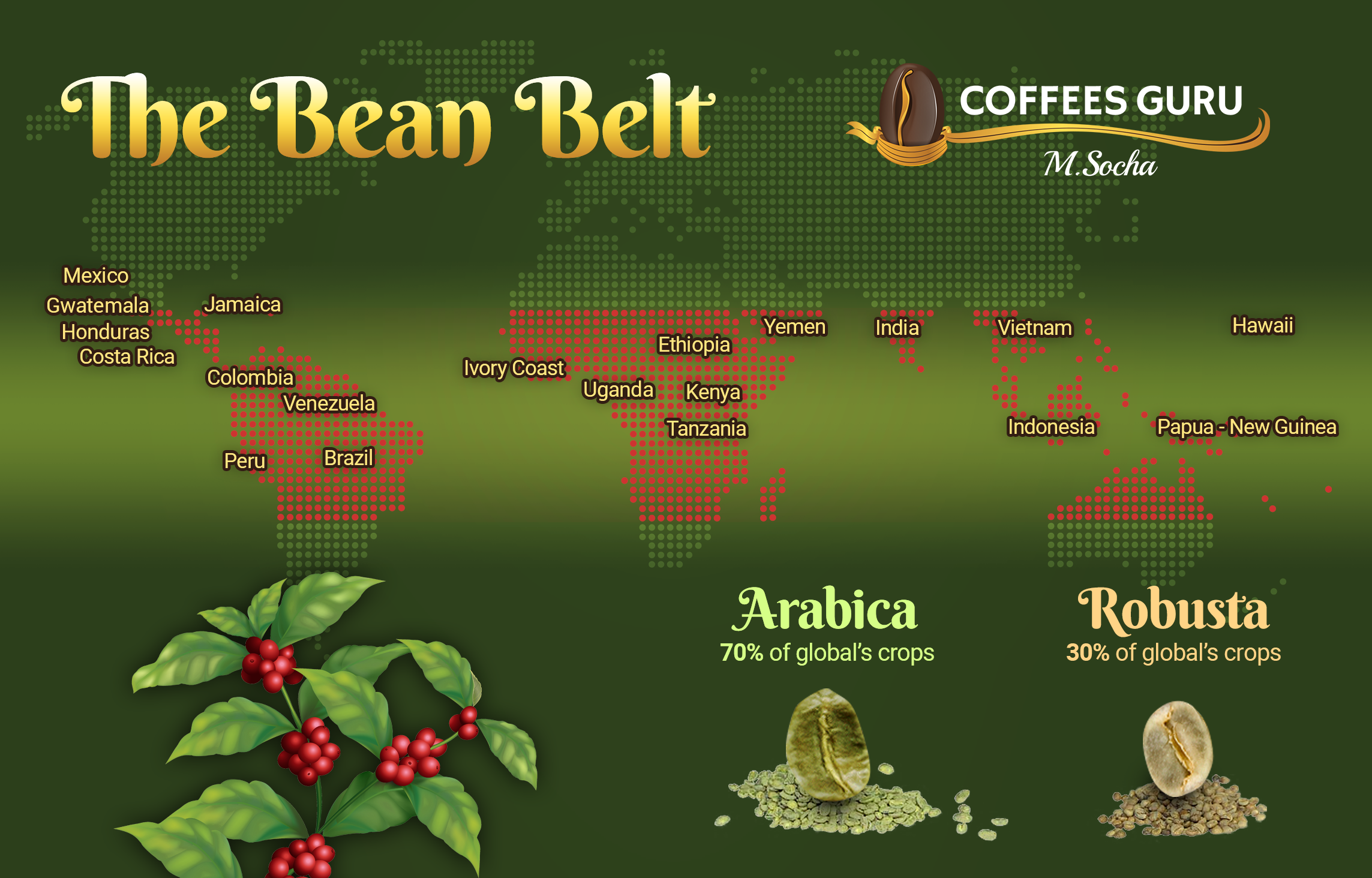
Coffee is being cultivated in so called „coffee bean belt”. Coffee trees grow within a defined area between the Tropics of Cancer and Capricorn. It includes countries as: Ethiopia, Kenya and Uganda in Africa; Brazil, Colombia, Mexico, Guatemala and Costa Rica in South and Central America; India, Indonesia and Vietnam in Asia. Coffee trees require subtropical climate, which means no division into seasons (it’s either summer or spring-summer). Thanks to these conditions, coffee trees can bear fruit several times a year. The other important thing is above mean sea level.
Coffee trees can grow only at the level of 900 meters or higher (only regarding Arabica, worse quality Robusta can grow slightly lower). There are attempts to initiate coffee growing on lower levels, but the problem there is the occurrence of a disease called „coffee rust” , which makes it impossible to develop a plantation.

As I already mentioned, coffee grows on ~2 meters tall trees, that bear many fruit few times a year. On big plantations, using industrial machines, the fruit are being harvested with combine-harvesters. It’s an economic solution, but it results in lower quality coffee. On small plantations, producing „premium” (only these are being offered in my roastery) coffees, coffee fruit are being harvested manually. Farms, which grow high quality coffee are usually small, so farmers aren’t walking very long distances.
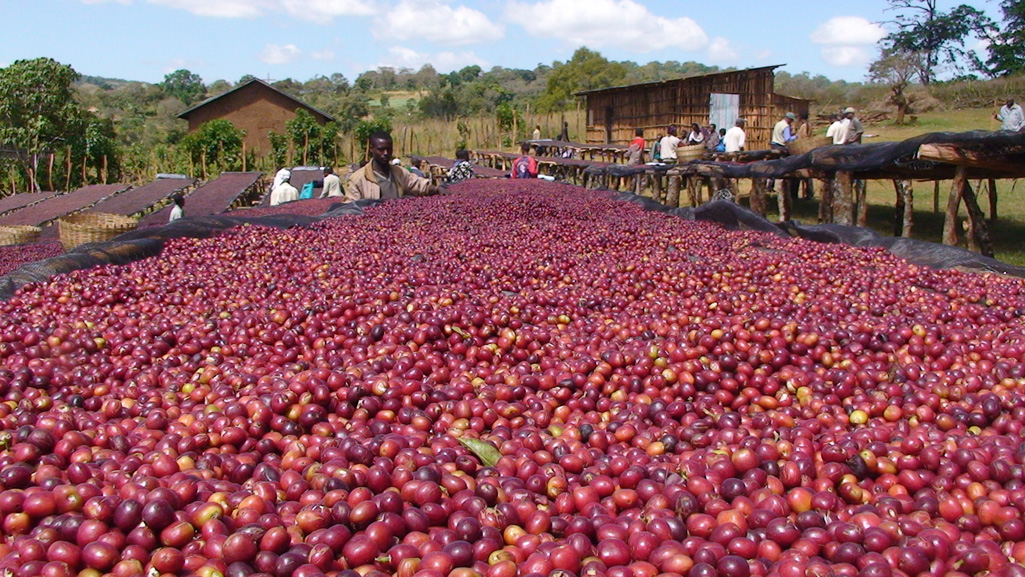
What happens next? After harvesting, coffee fruit need to be separated from their seeds – coffee beans. There are 2 methods of separating seed from the fruit: dry and washed. First method means that coffee fruit are laid on mats in full sun. This drying process can last even 4 weeks. During this time the pulp and skin become dry and fall off leaving only the seeds.
The cherries must be turned multiple times per day to protect against rot and to be dried even on all sides. Second method, called „washed” is a little more complicated. First, all the fruit are being put in water. Rotten and unripe fruit start floating on the surface, while ripe fruit stay on the bottom. Then, a special mechanism will separate pulp and skin from the seed. Cherries are being pushed through stone rollers by pressured water, which rip the skin and pulp, but leave the seed intact. The last thing left is to dry the seeds, pack them into sacks and send them to roasteries all over the world.

At the end, I would also like to mention coffee types. There actually are only 2 types of coffee cultivated worldwide: higher quality Arabica (70% of worlds coffee cultivation) and worse quality Robusta (30% of worlds coffee cultivation).
Arabica is more delicate, has a very extensive aroma-flavor set and results in a much better coffee after roasting. The name „Araboca” is historical and doesn’t relate to its origination. Arabica is cultivated in Africa, Asia and America and has many different varieties. Arabica cultivated in Africa, e.g. in Ethiopia will have much different taste than Arabica cultivated in America or Asia.
But what exactly are the differences? Which coffee to choose? This will be the topic of my next article. I invite you to read my blog in a few days and regularly visit my Facebook profile.



